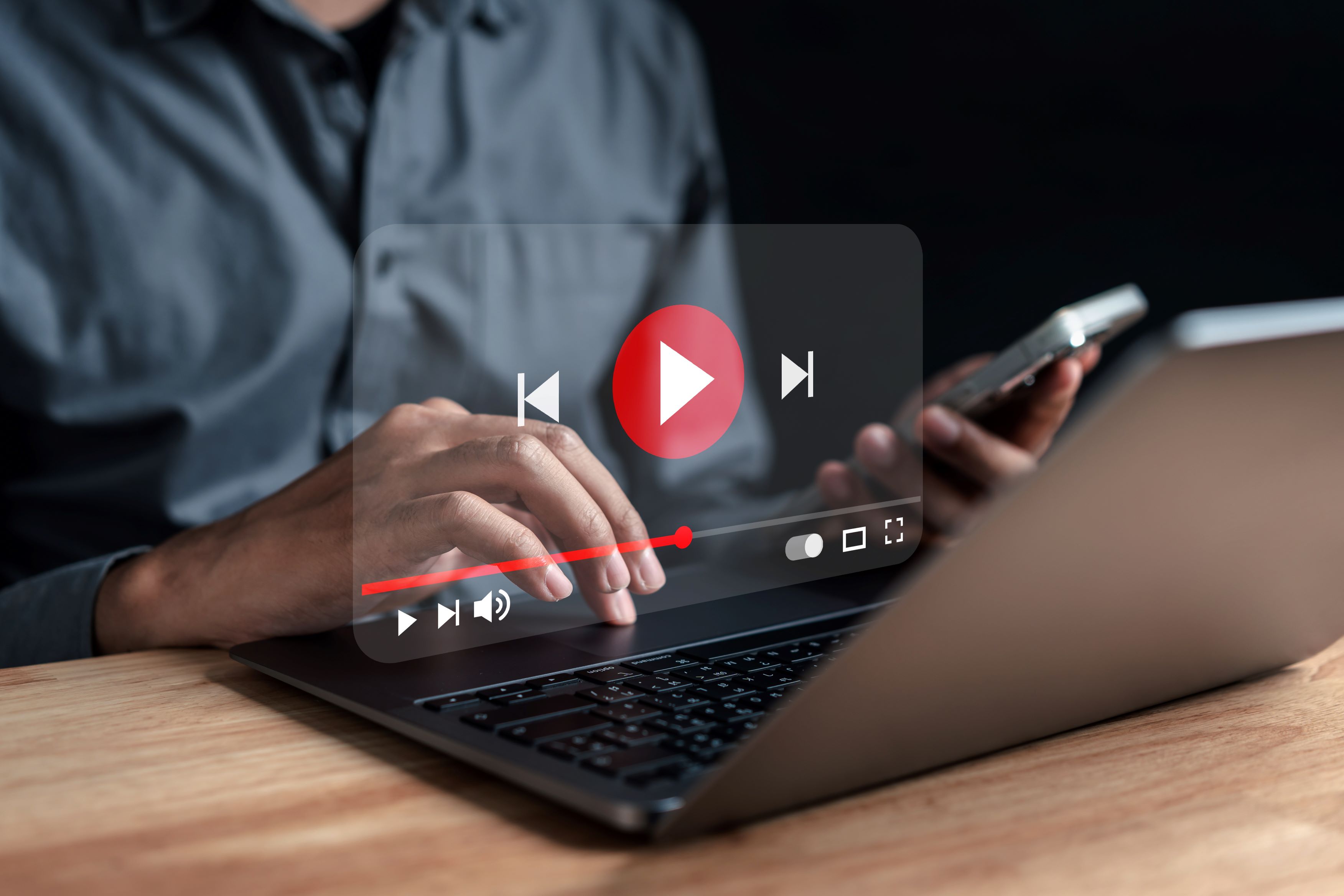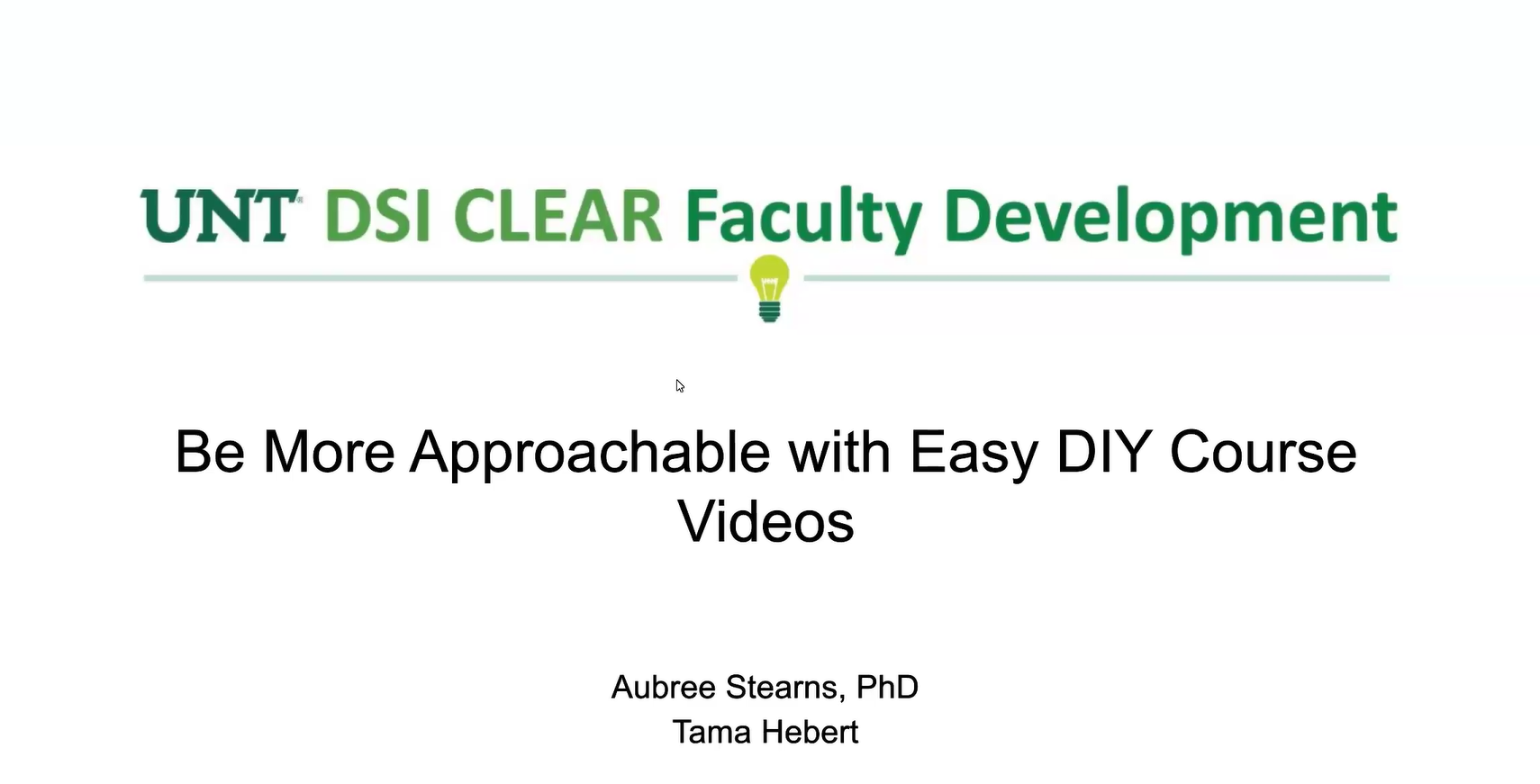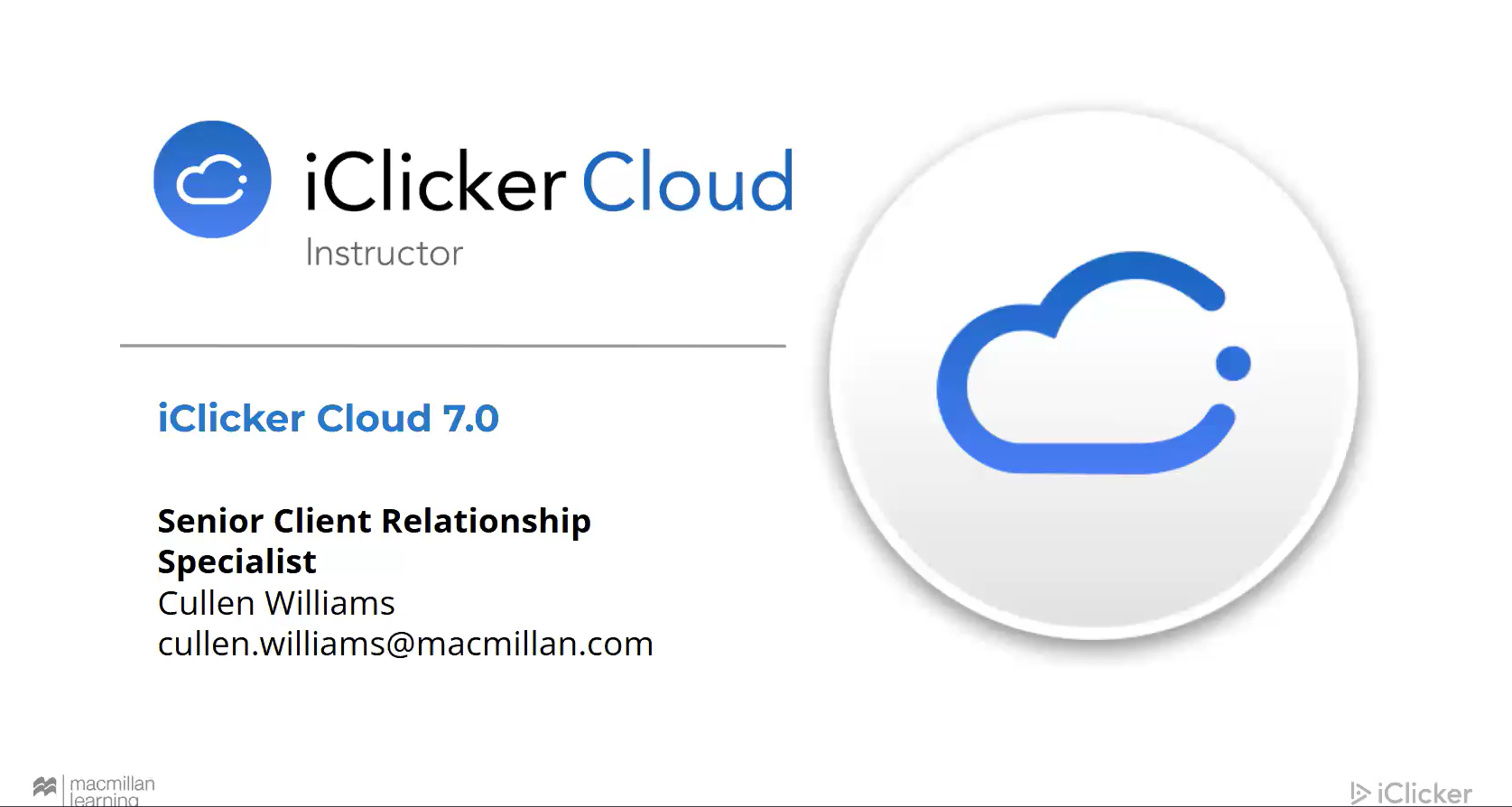Multimedia Course Design for Student Engagement and Retention
- DSI CLEAR
- Teaching Resources
- Theory & Practice
- Methods for Continuous Improvement
- Using AI in the Higher Education Classroom
- Invisible Labor and Faculty Retention Since COVID-19
- Inclusive Discussions
- Inclusive Assessment
- Designing Assessments for Academic Integrity
- Inclusive Instructional Strategies
- Instructor Presence in the Online Classroom
- Tips for Providing Personalized Feedback to Students
- Course Design for Student Retention
- UNT's CLAW 3 Active Learning Classroom Instructional Guide
- UNT Faculty Teaching & Learning Resource Guide
- Growth Mindset in the Higher Education Classroom
- Course Outcomes & Objectives
- Multimedia Course Design for Student Engagement and Retention
- Level Up Learning With Portfolios
- Group Work in Higher Education: Benefits & Practices for Success
- Open Educational Resources & Copyright Essentials for Instructors
- Evaluating OER Resources
- Accessibility Online
- Copyright Guide
- Online Teaching
- UNT Syllabus Template
- Teaching Consultation Request
- Open Educational Resources & Copyright Essentials for Instructors
- Evaluating OER Resources
Multimedia Course Design for Student Engagement and Retention

Multimodal, or multimedia, learning utilizes visual, auditory, kinesthetic, and/or text content in the classroom or application of course concepts rather than relying on just one mode, such as only textbooks, or only lecturing. Research has shown that diversifying course content by utilizing different modalities can catch student interest, boost engagement, and offer a sense of choice, autonomy, and empowerment in an environment that can otherwise feel relatively powerless (Addy et al., 2021; Verschelden, 2017; Papamitsiou et al., 2020). When students feel powerless in the classroom, it can negatively affect their executive functioning and cognitive engagement, consequently lowering performance outcomes (Addy et al., 2021; Verschelden, 2017).
Universal Design for Learning
Universal Design for Learning (UDL) is a widely used framework that helps ensure that all learners can access and meaningfully participate in new and challenging learning opportunities, and is built on the principles of engagement, representation, and action and expression. The UDL framework provides instructors with a basis on which to build flexible lesson objectives, instructional strategies, effective technology integration, and assessment options to support the unique needs of their students and help them reach their full potential within their course (Rao, 2015; Lisenbee, Pilgrim & Vasinda, 2020). Applying UDL strategies in alignment with its guiding principles can elevate students into goal-oriented, motivated, and strategic expert learners.
When implementing multiple forms of media into course content, instructors should be sure that all content is accessible for students with disabilities. UDL recommends making the following adjustments to content to ensure it is accessible for students with disabilities (Harris & Greer, 2020; Shelton et al., 2016):
- Provide options for customizing the display of information
- Offer alternatives for auditory information such as pairing it with captions and/or a readily available transcript
- Offer alternatives for visual information, such as images, by always attaching alt text and describing any relevant information that the image conveys in an accessible text or captioned audio format so that students with different abilities are able to meaningfully engage with the relevant information
- Ensure that text content can be comfortably accessed via screen reader, that the text size is adjustable, and that it can be accessed across multiple devices
For more information and resources on how to make sure your course is accessible, please visit the DSI CLEAR Accessibility page.
Types of Multimodal Content
The modalities instructors implement will vary based on what makes sense for their specific class given their academic discipline, teaching style, and available resources. Effective use of multimodal content is typically coupled with clear and direct instructions on how to navigate the course and complete assignments (Harris & Greer, 2020). There are nearly limitless options for implementing multiple forms of media into one’s class. The list below highlights some potential types of content that instructors can use according to modality:
Written materials
- Textbooks or publisher content
- Articles
- Lecture notes
- PowerPoint slides
- Newspapers or other print media
- Blogs or other websites
Visual materials
- Photographs or illustrations
- Tables or figures
- Infographics
- Memes
- Videos
Auditory materials
- Podcasts
- Audiobooks
- Music
- Recorded lectures
Course Videos
In an online course setting, instruction can be more effectively and engagingly conveyed via the use of course videos. Course videos can be used to introduce oneself to students, succinctly introduce or summarize module content, deliver asynchronous lectures, and explain assignment directions (Shelton et al., 2016). Course videos can build instructor presence, foster a more immersive and engaging learning experience for students, and leverage imagery to support course content (Shelton et al., 2016). Students benefit from course videos by being able to supplement text-based content with verbal instruction, resulting in a stronger grasp of complex concepts and bolstering their independent autonomous learning abilities (Xiao & Adnan, 2022, p. 1097; Nouri, 2018).
Work by Nouri (2018) and Magda et al. (2020) put forth the idea that, due to the reliance on mobile devices, students today tend to rely on their mobile devices to facilitate learning and complete assignments. This excerpt from Nouri (2018) describes the significance of mobile technology and multimodality as it relates to student learning:
“[…] The university students of today…in a mobile and flexible way use the affordances of different technologies, particularly portable mobile technologies, in order to construct knowledge through different semiotic modes when they are to create meaning out of course related content and activities during self studies” (p. 696).
Conclusion
Course design is an intentional process in which instructors can shape the learning experience of students through well-informed and strategic decisions. Motivating students through the use of various learning tools, media, and sequencing activities that scaffold student success are all things that intentional, multimodal course design can do (Lisenbee, Pilgrim & Vasinda, 2020). In summary, expressing course content and ideas through multiple accessible media types can go a long way in improving students learning experience and academic success.
References
Addy, T. M., Dube, D., Mitchell, K. A., & SoRelle, M. (2023). What inclusive instructors do: Principles and practices for excellence in college teaching. Taylor & Francis.
Harris, H. S., & Greer, M. (2021). Using multimedia for instructor presence in purposeful pedagogy-driven online technical writing courses. Journal of Technical Writing and Communication, 51(1), 31-52.
Lisenbee, P. S., Pilgrim, J., Vasinda, S. (2020). Universal Design for Learning within a Multiliteracies perspective. In (Lisenbee, Pilgrim, & Vasinda (Eds.), Integrating Technology in Literacy Instruction (1st ed.). Routledge, New York.
Magda, A. J., Capranos, D., & Aslanian, C. B. (2020). Online college students 2020: Comprehensive data on demands and preferences. Louisville, KY: Wiley Education Services.
Nouri, J. (2019). Students multimodal literacy and design of learning during self-studies in higher education. Technology, Knowledge and Learning, 24, 683-698.
Papamitsiou, Z., Pappas, I. O., Sharma, K., & Giannakos, M. N. (2020). Utilizing multimodal data through fsQCA to explain engagement in adaptive learning. IEEE Transactions on Learning Technologies, 13(4), 689-703.
Rao, K. (2015). Universal design for learning and multimedia technology: Supporting culturally and linguistically diverse students. Journal of Educational Multimedia and Hypermedia, 24(2), 121-137.
Shelton, C. C., Warren, A. E., & Archambault, L. M. (2016). Exploring the use of interactive digital storytelling video: Promoting student engagement and learning in a university hybrid course. TechTrends, 60, 465-474.
Verschelden, C., & Pasquerella, L. (2017). Bandwidth recovery: Helping students reclaim cognitive resources lost to poverty, racism, and social marginalization. Routledge.
Xiao, J., & Adnan, S. (2022). Flipped anatomy classroom integrating multimodal digital resources shows positive influence upon students' experience and learning performance. Anatomical Sciences Education, 15(6), 1086-1102


